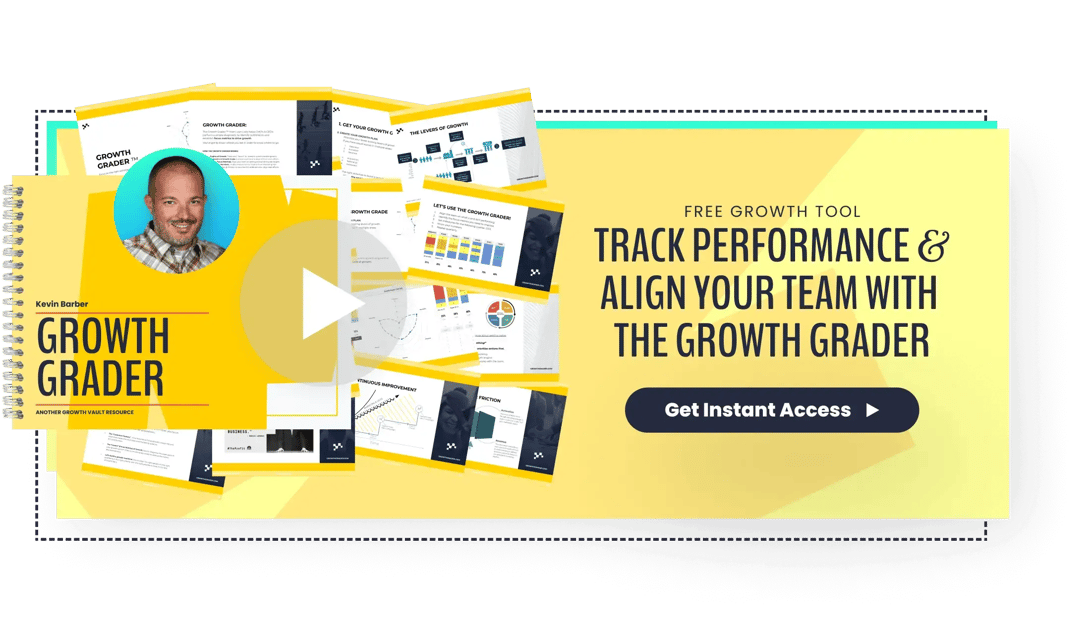-
1. Unclear Buyer Persona
-
2. Messaging Isn’t Customer-Centric
-
3. Treating Content as Advertising
-
4. Not Using Proper SEO
-
5. Haven’t Built A Proper Sales Funnel
-
6. Not Capturing and Utilizing Email Addresses
-
7. Confusing Your Customers
-
8. You’re Too Serious – Lighten Up!
-
Decide Which B2B Inbound Marketing Mistake You’ll Fix First

8 B2B Inbound Marketing Mistakes (and How to Avoid Them)
The first time I wore socks with sandals, it was a disaster.
I was in high school, and as I walked into class, I was met by a roar of laughter. I think a few kids were even pointing at my feet. I’ll never forget the feeling of blood rushing to my face turning it the most embarrassing shade of deep red.
At that moment, I knew I was the butt of a joke, but I didn’t know why. I simply wasn’t aware of the unforgivable fashion faux pas I was committing.
Thankfully, a student in my class came over and kindly took the time to explain my mistake and offered a simple style suggestion I could make to avoid more embarrassment in the future.
His advice? Don’t wear socks with sandals. Ever.
When it comes to B2B inbound marketing, you or someone in your marketing department may be wearing the business equivalent of “socks with sandals.”
Instead of being a minor mistake causing a bit of teenage embarrassment, this business mistake could be negatively affecting your lead generation, lead nurturing, and conversion rates.
In this blog post, I’ll point out eight of the most common B2B inbound marketing mistakes companies make and offer a few suggestions on how to avoid them altogether.
If you steer clear of each mistake correctly, not only will you avoid the future embarrassment of being seen at the next INBOUND conference with your athletic socks stuffed into a pair of Birkenstocks, but your business will also grow.
1. Unclear Buyer Persona
A buyer persona is a semi-fictitious representation of the ideal customer for your business. It is sometimes referred to as your audience persona, marketing persona, or ideal customer avatar.
Having a clear understanding of your buyer persona is extremely important in marketing as it makes it much easier to create effective and personalized marketing messages that speak to your customer's goals and challenges.
When you understand your customer on multiple layers and can speak to them in specific terms about the nuances of their problems, it helps you build trust and credibility faster. It also makes it easier to get them further down your sales funnel.
The mistake that many B2B businesses make is that they have a vague and non-specific idea of who this buyer persona is. They often list the job title and industry of the person they’re marketing to with few other details, thus creating an incomplete picture of who their ideal customer is and what they’re trying to accomplish.
This is harmful because it leads to vague and uncompelling marketing campaigns that don't connect with anyone because they try to speak to everyone.
Thankfully, the solution to this common B2B inbound marketing mistake is simple.
Interview your customers.
Not just one of them either, interview dozens of them if you can.
The goal of interviewing your past customers is to learn more about who they are, what they desire and why they desire it, and also to uncover some of the pain points that drove them to seek a solution to their problem when they did.
Once you’re crystal clear on who your ideal customer is, and what challenges they face you’ll be able to create marketing materials that will connect with them because they will feel seen and heard by your brand through your brand messaging.
This will bring them one step closer to becoming a customer.
2. Messaging Isn’t Customer-Centric
When companies can get their messaging in front of potential customers, far too many of them spend that valuable time talking about themselves.
“Our product. Our service. Our team. Our solution.”
This is a huge B2B inbound marketing mistake.
As hard as it is to hear, the truth is that customers don’t actually care about you, your company, or your team.
What they care about is solving the problem they’re facing. That’s all you should be focused on when communicating with potential customers.
Here is a suggestion for a more effective way to speak to customers:
“Their problem. Their pain point. Their problem. Their pain point. Your solution.”
A quick and easy way to measure whether you’re talking about yourself too much is to go to your company’s website and count the number of times it uses the words “we” and “our”. Then compare that to the number of times it uses the words “you” and “your”.
If “we” and “our” outnumber “you” and “your,” it means you’re talking about yourself too much, and it’s time to rewrite some of your copy to make it more customer-centric.
3. Treating Content as Advertising
While it is true that all advertising is content, not all content is advertising.
I find it helpful to think of content and advertising like this:
- Advertising is used to promote a specific product or service and content is used to build relationships with your target audience
Advertising isn’t bad, and it’s still important to create, it just shouldn’t always be your first foot forward. If you lead with an ask, it can come across as desperate, pushy, or generally off-putting.
An alternative (and arguably better) foot forward is to give before you ask – to create helpful content that speaks to your target audience’s questions, problems, and the metrics they’re responsible for in their company.
In other words, be helpful.
The more helpful you are the more your audience will come to see you as a trusted source that is already working to help them solve their problems and achieve their goals. If you do that often enough over a period of time you’ll start to establish a trusting relationship with your target audience.
Once that trust is established, the distance between content and sale becomes much smaller.
Here’s a simple example of how the advertising vs. content marketing approach might play out:
Example 1:
“Are you thirsty? You should buy our delicious lemonade. It’s only $1.” (Advertising)
Example 2:
Blog post: Top 5 liquids to quench your thirst. (Content => Trust)
Video: 10 foods that will keep you hydrated this summer. (Content => Trust)
The ask: We sell delicious lemonade for $1. If you’re thirsty, buy it here. (Trust => Sale)
In both examples, the ideal outcome is the same – customer buys lemonade – but the journey to get there looks much different.
Related Read: 5 Best Ways to Position Your Brand Through Content Marketing
To increase the odds that customers will listen when you speak and purchase when you ask, try creating more pieces of helpful organic content in order to build trust before you ask for the sale.
4. Not Using Proper SEO
When searching for something online, how often do you look past the first page of Google search results?
If you answered “not very often,” you’re not alone.
It’s so important to rank on the first page of search results because if don’t look beyond the first page of search results, you can bet your customers won’t either.
The great news is that with minimal effort or expense, you can increase your odds of surfacing in search results by using proper search engine optimization (SEO) best practices.
You can read more about SEO best practices here, but the gist is that you’d use a tool like Semrush to pinpoint the exact terms and phrases your target customers are typing into Google when searching for the solution to their problem.
You can then include those search terms and phrases in the helpful blog articles for your target audience.
It’s as simple as that.
The cherry on top is that 70% of marketers see SEO as more effective than pay-per-click (PPC), which means you’ll get better results with less money spent.
5. Haven’t Built A Proper Sales Funnel
If you aren’t familiar with what a sales funnel is, let’s start with a brief explanation.
A sales funnel is a marketing term that describes the journey your target audience takes on the way to becoming a customer.
A typical sales funnel has four key stages (awareness, interest, desire, and action) represented by three stages of the funnel:
- Top of Funnel (TOFU)
- Middle of Funnel (MOFU)
- Bottom of Funnel (BOFU)
The closer someone gets to the bottom of the funnel the more committed they are to making a purchase. The goal is to guide them from the top of the funnel (awareness) to the bottom of the funnel (action).
Let’s take a look at each stage in the funnel.
TOFU: This is where your customer becomes aware that your business, product, or service even exists. Top-of-funnel awareness can come in the form of ads, word of mouth, or through Lean Lab’s favorite awareness method, searchable organic content such as blog posts or YouTube videos.
MOFU: Now that your potential customer is aware you exist, the middle of the funnel is where they would develop an interest in your product or service. This interest can be nurtured by providing them with resources such as an eBook, a webinar, or a series of emails to help them make an informed purchase decision. If your resources are genuinely helpful, you can start to guide the customer’s interest (this product or service could work) toward becoming a desire (I need this product or service).
BOFU: This is the closest point to the sale. At this stage, sales calls and demos can be beneficial in moving your audience from having a desire for your product or service to taking action in the form of a purchase.
Related Read: Building and Filling a Sales Pipeline Funnel the Right Way
The B2B inbound marketing mistake that many businesses make is that they rush people from the TOFU to the BOFU without properly developing a relationship and nurturing the lead.
This mistake is kind of getting someone’s phone number and the first text you send it, “will you marry me?”
To build and implement an effective sales funnel you need to slow down.
Take your time.
Think long-term.
And then, build some of the necessary assets – blog posts, videos, lead magnets, eBooks, webinars, email marketing sequences, etc. – to be able to capture your audience’s attention, build a relationship with them, and guide them toward a purchase.
Next, we’ll highlight two of the most common sales funnels mistakes and help you avoid making them.
6. Not Capturing and Utilizing Email Addresses
According to Hubspot, 81% of B2B marketers say their most used form of content marketing is email.
That isn’t surprising since email marketing is one of the most effective ways to build and nurture relationships with potential customers. It’s also a great way to guide those contacts into becoming leads and, eventually, customers.
All that is to say, if you aren’t actively building an email list, you’re making a mistake.
Beyond being a great relationship builder, email marketing also allows you to get deeper insights into what types of content your ideal customer responds to.
You can measure email open rates and click-through rates (CTRs) on your calls to action (CTAs), which can then inform which campaigns are helping drive revenue.
For businesses looking to maximize productivity, you can also automate email sequences meaning you have marketing messages being delivered to inboxes around the country even when you’re not at your computer.
When done correctly, automating your email marketing essentially gives you a full-time marketer working 24/7 across multiple time zones without having to pay overtime.
Who wouldn’t want that on their team?!
7. Confusing Your Customers
Have you ever been to a website and spent WAY too long trying to find the information your looking for? Or even worse, jumping through a bunch of unnecessary hoops just trying to complete a purchase?
It’s extremely frustrating and can cause your ideal customer to leave your site in search of a buying experience that causes less friction.
Here are a few of the most confusing (and common) B2B inbound marketing mistakes brands make all the time:
- Cryptic brand messaging
- Vague CTAs
- Difficult to navigate website menus
Cryptic brand messaging. If a stranger can’t look at your homepage for ten seconds and immediately understand what you do and how to take the next step in the buying process, rewrite it until it’s clear. Prioritize clear and concise language over cute and cryptic messaging.
Related Read: Brand Identity Questionnaire: 20 Questions to Consider
Vague CTAs. There’s nothing compelling or clickable about CTAs that says “Learn More” or “Click Here.” People need to know what will happen when they click. Instead, try something more specific such as “Start Your Free Trial” or “Book A Call.”
Difficult to navigate website menus. When it comes to website menus, less is more. Less is also less confusing, less frustrating, and less likely to drive sales away from your website.
When doing business online, confusing your customer through any of these examples should be considered a cardinal sin and avoided at all costs.
If you’re able to avoid these mistakes, your customers will have a much less confusing (and therefore more enjoyable) experience with your brand.
8. You’re Too Serious – Lighten Up!
A lot of B2B marketing gets a bad reputation for being incredibly dry and, let’s face it, boring.
…but it doesn’t have to be!
Just because you’re serious about building a great business doesn’t mean your content has to be serious.
For example, here’s a light-hearted approach to an ad campaign created by MNTN featuring its revolutionary advertising platform called Performance TV:
If you don’t happen to have a funny copywriter (or Ryan Renyolds) on your marketing team you could always outsource the task to a professional copywriting service such as Punchline Copy.
Decide Which B2B Inbound Marketing Mistake You’ll Fix First
You now know eight of the most common B2B inbound marketing mistakes that brands make.
If you’re serious about avoiding these mistakes, it will likely require you to take action, either to correct the mistakes you’re currently making or to put the right systems in place to ensure you don’t start making any of them.
Some solutions and prevention strategies will require money to execute, and some will require time, but all of these mistakes are worth avoiding.
At Lean Labs, we’ve named an entire page of our website Fix This First to help brands like yours take the right first step toward solving the most pressing issues in the right order.
For more B2B inbound marketing strategies and insights, please download the Lean Labs growth playbook.






